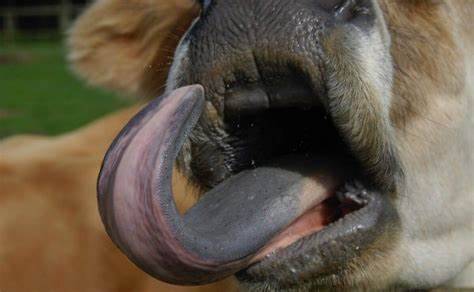Blue tongue disease is caused by a virus transmitted by insects, affecting livestock such as sheep and cattle, with a lower infection rate in cows compared to sheep. This disease spreads more frequently in the summer when mosquitoes, which transmit it through blood to sheep and cattle, are prevalent. Blue tongue disease does not spread from an infected animal to a healthy one through direct contact. The incubation period lasts from 4 to 7 days, during which some symptoms appear, such as fever with severe congestion of the oral mucosa, and the occurrence of ulcers and bleeding in the mouth and lips. Immediate treatment is required to prevent the death of infected animals. It is worth noting that this disease poses no danger or threat to human life, as it does not transmit through the meat or milk of livestock to humans. The origins of this disease trace back to Africa and tropical regions, but it has now spread worldwide, causing significant losses to sheep and cattle farmers due to the death of large numbers of their livestock and strict restrictions imposed after its spread.
### Symptoms of Blue Tongue Disease
The main symptoms of blue tongue disease observed in animals include:
- Elevated body temperature of the infected animal.
- Lethargy and loss of appetite in the infected animal.
- Increased nasal, mucous, and salivary secretions from the mouth.
- Inflammation of the oral mucosa, with bleeding spots that later turn blue.
- Severe diarrhea in the animal.
- Swelling in the head and muscle weakness in the infected animal.
- Pneumonia and eye inflammation.
- Pregnant females experiencing abortions.
- Difficulty walking or abnormal gait of the animal.
- Dry scabs at the mouth's opening.
- In severe and advanced cases of the disease, the tongue appears blue, but this is not a primary diagnosis sign.
### Diagnosis of Blue Tongue Disease
The disease is diagnosed through clinical signs observed in the infected animal and by taking blood and spleen samples for laboratory examination to detect the virus. Additionally, it can be diagnosed through necropsy, where congestion and hemorrhage in the lungs, heart, and digestive tract are noted after the death of the infected animal.
### Treatment and Prevention of Blue Tongue Disease
There are no specific treatments for this disease; however, treatment focuses on alleviating associated symptoms and administering antibiotics to prevent secondary infections that may affect sick livestock. Prevention methods include:
- Identifying and removing infected animals before they mix with healthy ones.
- Using appropriate insecticides to eliminate the disease vector.
- Administering specific vaccines that protect healthy, uninfected animals from this disease.




